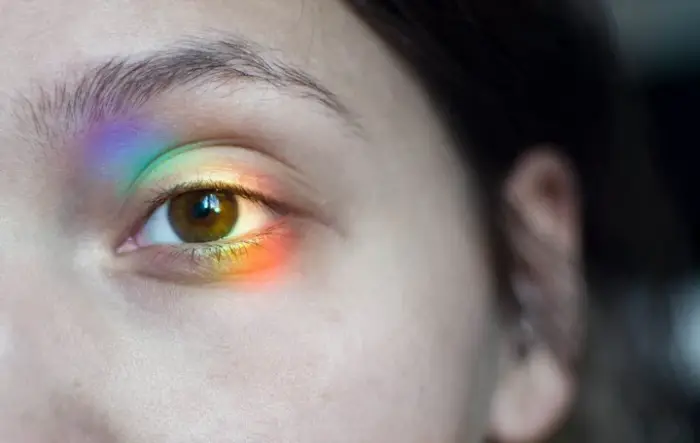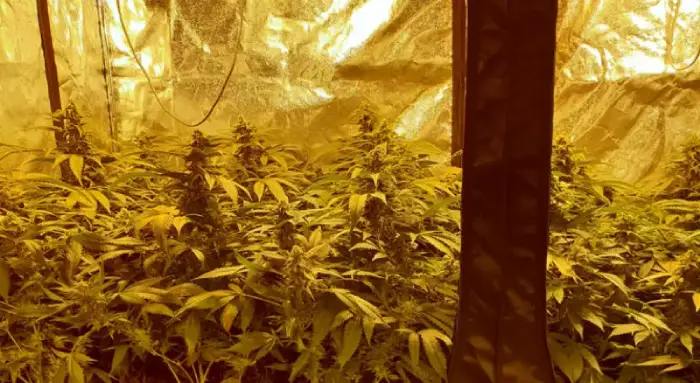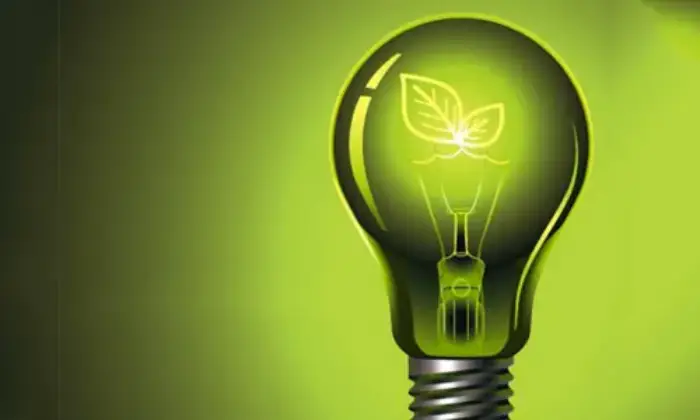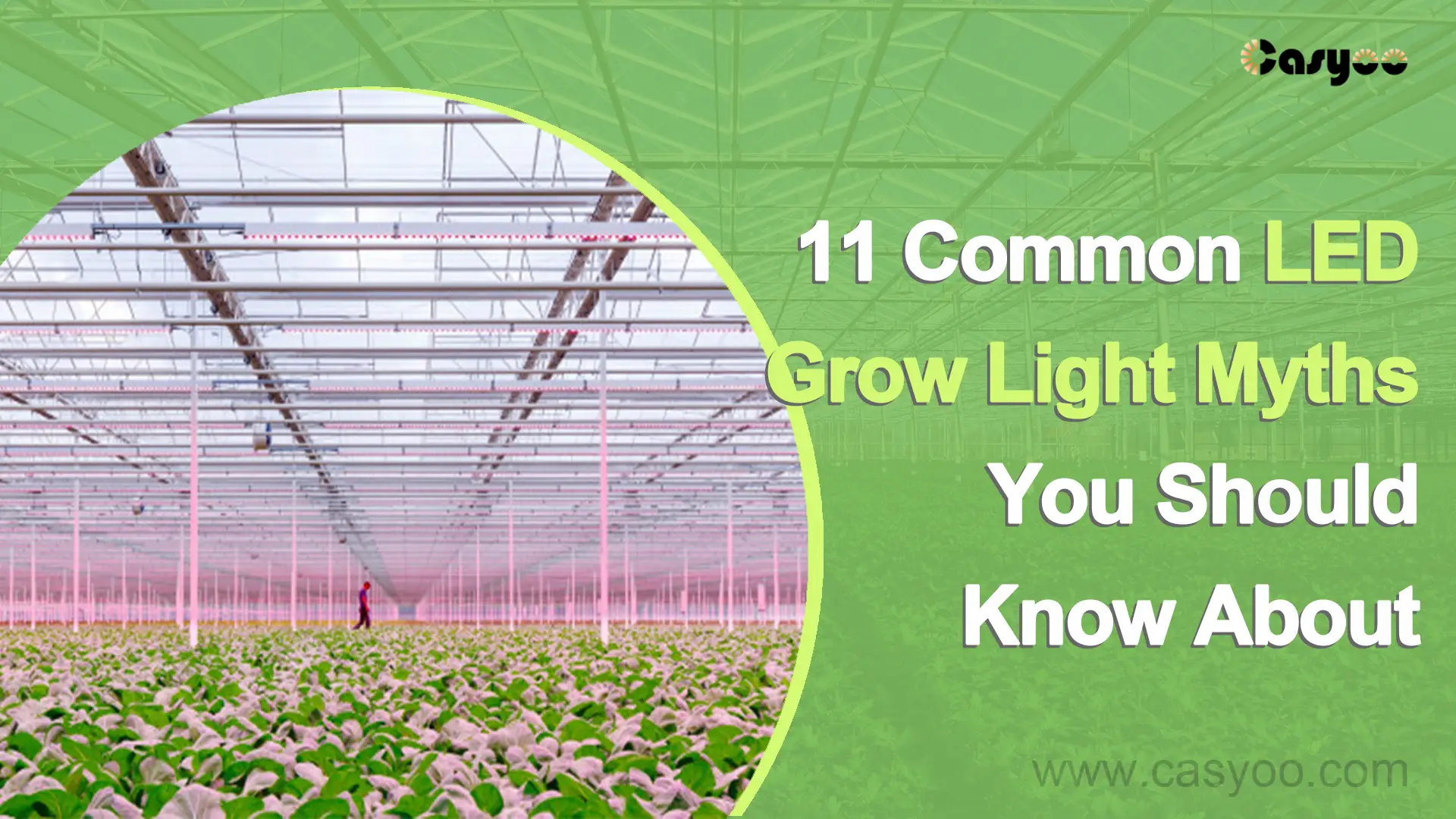LED grow lighting is a great option if you want to buy a new grow light system or replace your outdated fluorescent bulb. Like any new technology, LED grow lights are the subject of numerous myths. We provide you with 11 of the most prevalent LED grow light myths to dispel any reservations you may have about LED technology.
Myth 1: LED grow lights are 100% efficient.
One of the LED grow light myths is 100% effective at converting electricity into light. Although they are more efficient than traditional grow lights, such as HPS, MH, and florescent grow lights, LED grow lights still have energy waste due to the the structure of diode.
Myth 2: LED grow lights do not last long.
Every grower’s top concern is the durability of fixtures in the grow room. There is a widespread belief that HPS are the most durable because they have long been the industrial standard, although this is not the case.
Compared to HPS grow lights, which have a lifespan of 8 to 12 months, LEDs have an average lifespan of 50,000 hours or roughly 10 years, and even longer if not used at maximum intensity.
Myth 3: LED grow lights are too expensive.
A prevalent misconception regarding LED lighting is that LEDs are too costly. Is it not anticipated, though, that recent technology will cost more than old ones?
While LED grow lights may initially cost more than HSP grow lights, over time, their expenses are significantly lower than HPS grow lights. In order to regulate humidity and temperature in HPS rooms, additional HVAC is required. This means that new infrastructure must be added to the grow room, raising the cost of cooling on each run. However, LEDs frequently need little to no HVAC systems. Furthermore, the increased initial cost of the LED grow lights will be swiftly offset by the electricity they save.
Myth 4: LED grow lights contain hazardous materials.
While it is understandable for anyone to be concerned about their safety, the claim that LED grow lights contain hazardous materials doesn’t hold water. LED lights are completely safe! Furthermore, LEDs won’t hurt people or the environment because they are 100% recyclable.
Myth 5: LED grow lights are harmful to our eyes.

Some people claim that LED lights are bad for our eyes and might even make us blind. Of course, LEDs, like any other artificial light source, can cause eye strain if you gaze at them directly for extended periods. In fact, LED grow lights are very safe when used properly. They meet all photo-biological safety standards.
Myth 6: LED grow lights don’t produce heat.

Considering that LEDs remain cool even after hours of operation, many people believe that they emit no heat. In theory, LED grow lights can transform all electrical energy into light, but in actual use, they convert 20% of the electricity into heat.
A light fixture with one hundred LED bulbs will produce a great deal of heat. The back of the fixture design dissipates most of the heat. Larger units include fans as well, which help dissipate heat. Heat management is crucial as heat can shorten the lifespan of your light and hinder plant growth.
Myth 7: The more lumens, the better.
Since lumens are a unit of measurement for light intensity, it makes sense to assume that a grow light with more lumens would be superior. The issue lies in the fact that lumens are based on the human eye, and green and yellow light are far more visible to us than red and blue.
Think about this extreme scenario in which there is only yellow light. It has a high lumen rating since people can see a lot of it. However, yellow light has a relatively low intensity for plants because they do not utilize it properly. Lumens are an excellent unit for assessing the lighting in your house, but they are not very useful when assessing LED grow lights.
Myth 8: LED grow light can’t adjust the spectrum.
When it comes to HID and HPS lighting, most manufacturers use similar components with just minor variances in spectrum and efficiency. But LEDs, come with various styles, designs, configurations, spectra, lenses, and housing options.
Many people are unaware of the fact that LED grow lights have spectral options, so they might not be able to change the color at different growth stages of their plants. Casyoo LEDs allow spectrum tuning to better suit the exact needs of your crops. For instance, a larger concentration of red is beneficial for flower growth and can enhance internodal spacing, whereas blue promotes a more compact structure.
Myth 9: LED grow lights are not vibration-proof.
LED diodes don’t have any moving parts, and because the glass is sturdy, they won’t break easily. Of course, shaking an LED vigorously will cause it to break. There’s nothing to worry about because LED grow lights undergo a vibration test before being released into the market.
Myth 10: Green light is useless.

Plants are green, which leads some impressionable people to conclude that green light is useless since plants reflect most of it.
This is untrue.
Recent studies have shown that green light penetrates deeper into cell structures and is crucial for plant health and immune system response. Most plants reflect green light into their lower canopy in order to continue growing even in the absence of direct sunlight. This makes more light penetration where it’s needed.
Myth 11: LED grow lights are only suitable for growth, not flowering.
In fact, superior LED grow lights outperform conventional HPS, MH, and CMH lights in terms of flowering. The reason is straightforward: LED grow lights can absorb more red light, including red, deep red and far red, which encourages flowering, and more blue light that gives plants their compact structure, stronger stems, larger leaves, and capacity to produce terpenes and other essential oils.
Casyoo full spectrum grow lights incorporate 660nm red and 760nm far-red light, which helps encourage faster flowering growth and more essential oils.
LED Grow Light Myths: Final Thoughts
After reading this post, you definitely have a better understanding of LED grow light myths. If you’re an indoor gardener hoping for productive growth and large harvests, you should light your grow space with LED grow lights. With the variable spectrum that these cutting-edge fixtures provide, your plants will receive the greatest possible light at every stage of their growth cycle. Check our LED grow light series!





